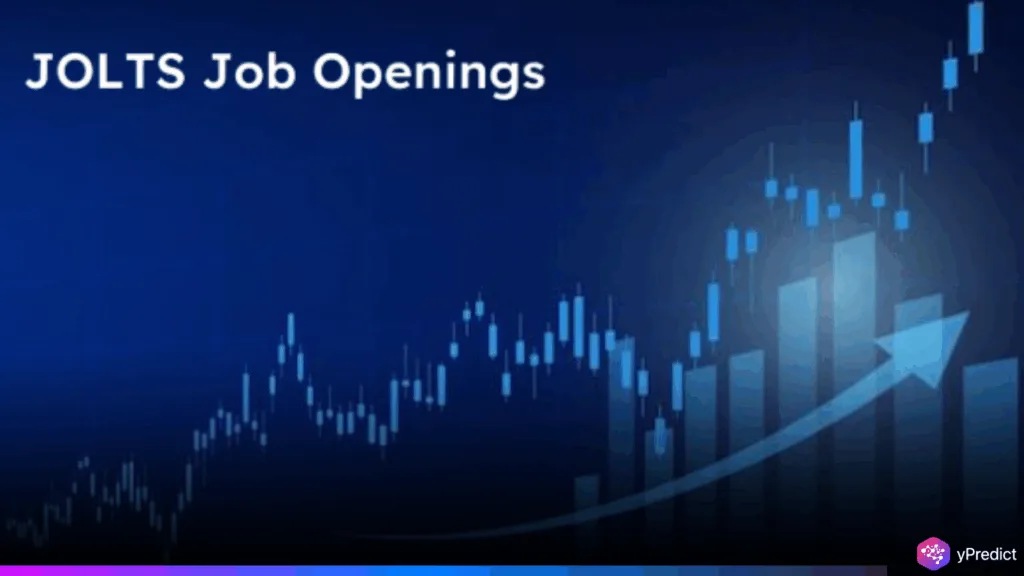
Investors and economists alike are turning their attention to the JOLTS report being released today at 14:00 GMT. The report is published by the US Bureau of Labor Statistics and shows the state of the labor market at the end of April.
This report should show job openings still continuing to slow, and supporting indications that the US labor market is gradually cooling off.
Expectations are for job openings to tick down to 7.1 million from 7.2 million in March. This represents a decrease, but not a major one, and job openings remain well down from the post-pandemic job openings peak of 12 million in March of 2022. This type of report could hinder the current Federal Reserve caution in interest rates as officials are using the labor market situation to balance higher potential unemployment risk against inflation fighting.
Why the JOLTS Data Matters for Fed Policy and Markets
The JOLTS report is considered an important indicator of the health of the labor market, offering useful information about job vacancies, hires, quits, and layoffs, all of which are essential in determining wage growth and inflationary pressures. Federal Reserve policymakers keep a close eye on the data for some indication about sheer labor market tightness or whether the labor market is showing any signs of slack.
Notes from the Fed meeting conducted from May 6-7 imply that Federal Reserve officials are growing more concerned about rising risks to employment. Some Federal Reserve officials, such as Dallas Fed President Lorie Logan, expressed the view that inflation risks and employment risks were still “roughly balanced,” while others pointed out that labor demand may be softening more quickly than previously expected.
How the Data Could Impact the USD and Fed Rate Outlook
A soft JOLTS print would likely reinforce expectations that the Federal Reserve will begin cutting interest rates later this year. The CME FedWatch Tool shows markets are currently assigning just a 25% probability to a rate cut in July, with stronger expectations building toward a September move. Any evidence of labor market weakness could tip sentiment toward earlier easing, triggering USD selling in the short term.
Conversely, a surprise uptick in job openings — especially a print above 7.7 million, as seen in January — could undermine the case for near-term rate cuts. This scenario would suggest that demand for workers remains robust, potentially prolonging inflationary pressures and prompting investors to reassess the Fed’s timing. Such an outcome would likely support the USD, at least in the short term.
Technical Outlook for EUR/USD
In parallel to the JOLTS release, traders will also be watching its impact on EUR/USD, especially ahead of Friday’s Nonfarm Payrolls (NFP) report. According to Eren Sengezer, European Session Lead Analyst at FXStreet, technical signals are favoring the euro in the near term.
He notes that the Relative Strength Index (RSI) on the daily chart remains near 60, indicating growing bullish momentum. The currency pair has also rebounded from the 20-day Simple Moving Average (SMA), currently at 1.1280, after a brief dip last week.
All Eyes on Friday’s NFP and Fed Response
While today’s JOLTS report reflects data from the end of April, the labor market narrative will continue to evolve later this week when the May Employment Report is released on Friday. Taken together, the two datasets will offer critical clues into the trajectory of the US economy and the timing of potential Fed policy changes.
Whether today’s figures confirm a steady cooldown or hint at unexpected resilience, the implications for markets and the USD could be significant. In either scenario, the labor market remains a central focus for policymakers, investors, and currency traders alike.







